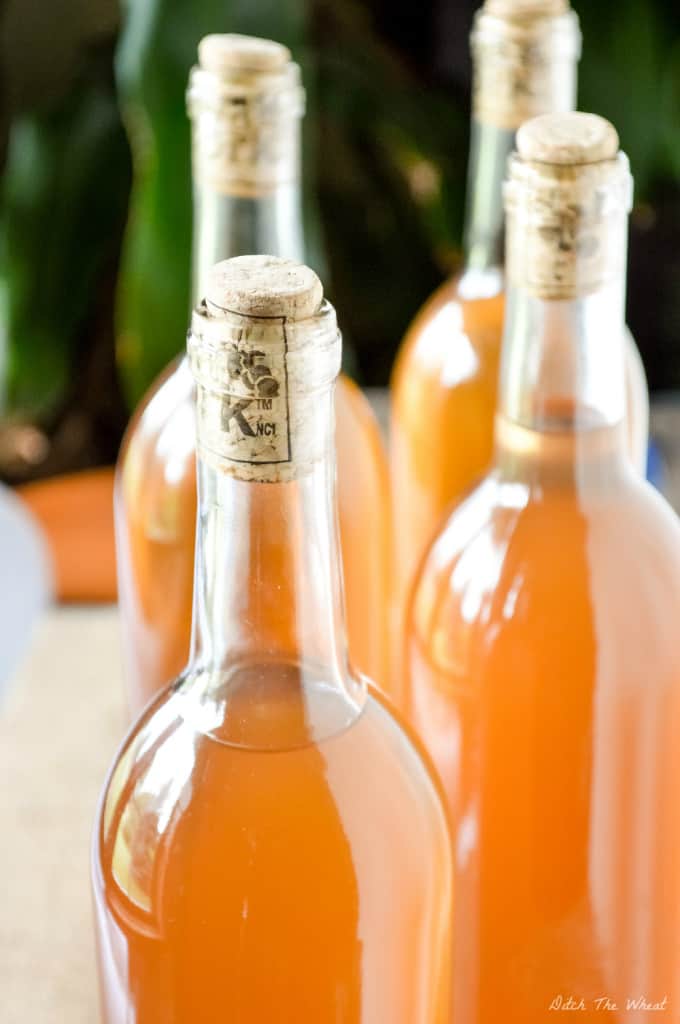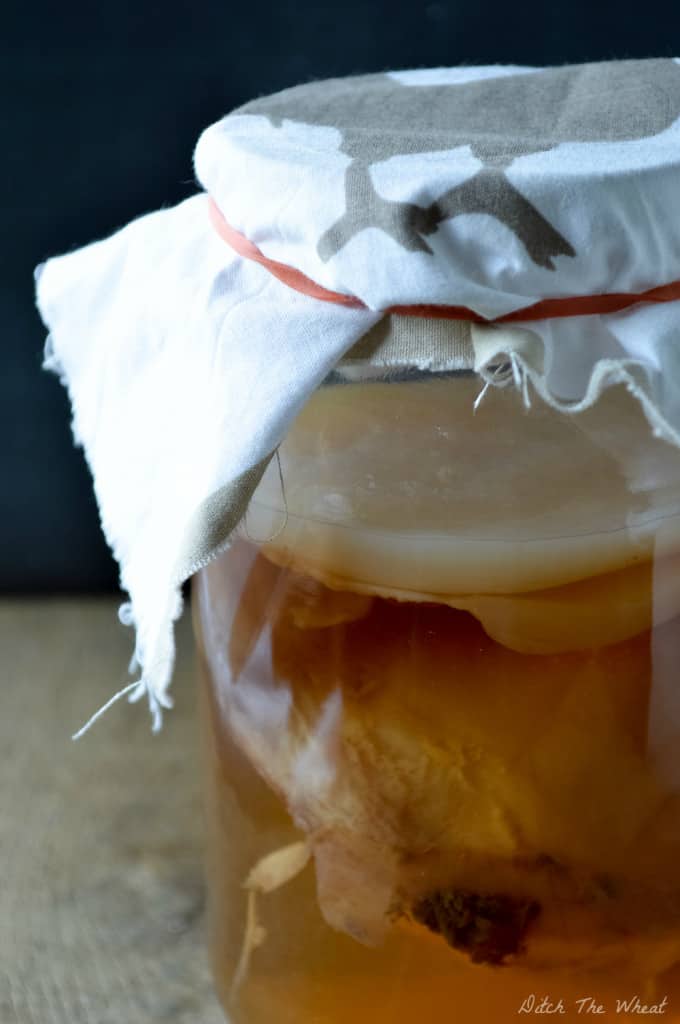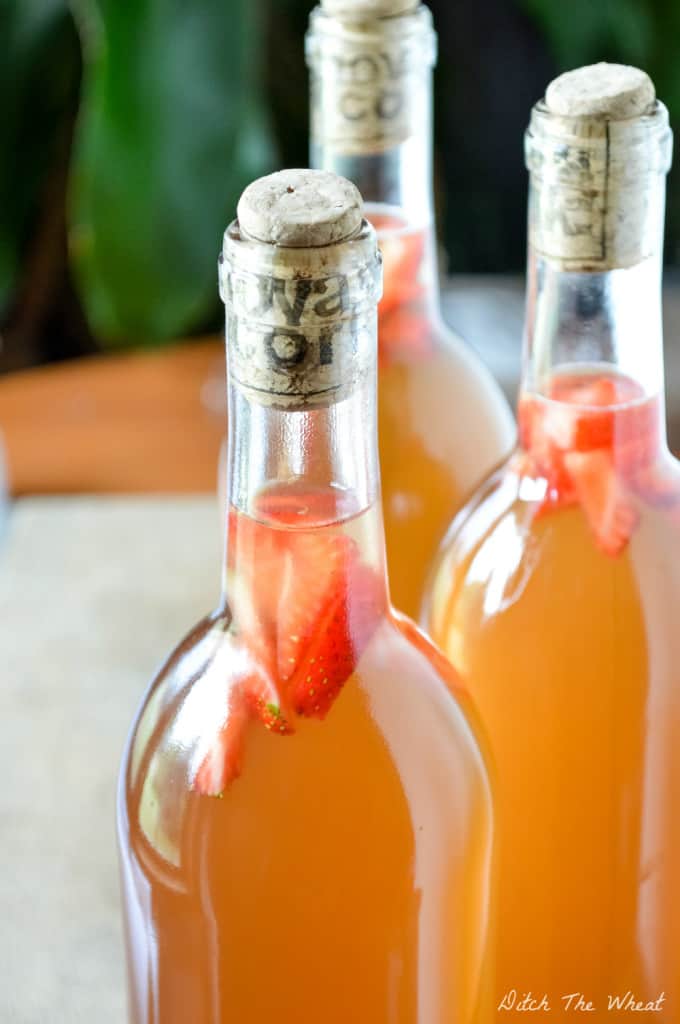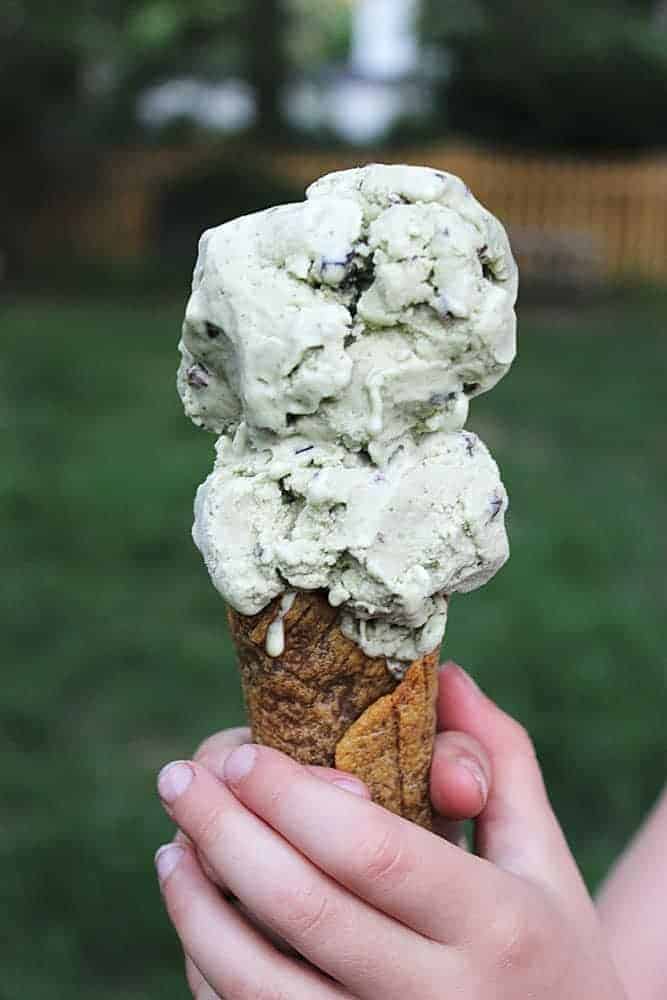How to Make Kombucha
This post contains affiliate links including Amazon affiliate links.
How to Make Kombucha
Kombucha is my favourite drink. I practically live on this stuff and go through withdraws if I’m on vacation. Here’s a tutorial on how to make kombucha. This recipe produces 3 gallons. See my notes at the bottom to learn how to adjust the recipe as you increase your amount of starter tea.
Let’s get some definitions clear. When I say “starter tea” I mean a certain amount of kombucha from your last batch. The starter tea has probiotics in it that will culture your next batch. For example, if you followed my last post on how to grow a scoby you would use all of the kombucha as your starter tea. Take it from me, it’s easier to buy a scoby then to try to grow one. You can find scobies to purchase here that come with starter tea. Then you would increase the amount of starter tea you save for each of your batches until you reach 2-3 gallons. 2-3 gallons of kombucha might seem like a lot but I drink a wine bottle amount of kombucha a day and you’ll probably find yourself going through it fast too.
Scoby – is the white alien thing that you either purchased in a kombucha starter kit or grow one as I showed you in this post.
How to Make Kombucha Step 1: Boil Water
Boil 2 gallons of filter water which equals 32 cups of water.
How to Make Kombucha Step 2: Add Tea
Add 8 bags of green tea. Sometimes I use less, for example, if I am running low on tea I add 5-6 bags. I never notice much of a difference in taste. Steep the tea for about 20 minutes. Honestly, I let it steep for hours.
How to Make Kombucha Step 3: Add Sugar
You need to use sugar such as organic cane sugar because raw honey has antibacterial properties and it doesn’t work in the fermentation of kombucha. Add 1 cup of sugar for every gallon of water. If I’m boiling 2 gallons of tea, I add 2 cups of organic cane sugar. Stir the liquid to dissolve the sugar.
How to Make Kombucha Step 4: Cool the Brew
You need to cool the brew to room temperature. Adding a hot liquid to the starter tea and scoby will kill the probiotics and the scoby. Since I am making so much I often let it cool overnight and add the tea to the starter the next morning.
How to Make Kombucha Step 5: Mix Starter with New Tea
Add the cooled tea to your starter. There is no need to wash the container or remove the scoby. You can pour the tea directly into your brewing container. Cover the jar with a cloth and elastic. Never leave this uncovered or even loosely covered. If you do there is a strong chance of fruit flies making their home on top of your scoby.
How to Make Kombucha Step 6: Wait
In my Canadian climate during the summer it takes 7 days for a batch to be ready. When I was still trying to figure out when my batch was ready I would taste test it every day. I noticed that when it was ready the liquid would fizz as I poured it into my glass. The taste would switch overnight from being a sweet tea taste to a tart apple juice taste. If you don’t know what plain kombucha tastes like, I would recommend you purchase a few bottles at your local store so you have a reference point. My friends in warmer climates say their batches are done in as little as 4 days. I also wrap a thick towel around my jug to keep it warm.
How to Make Kombucha Step 7: Bottling and 2nd Fermentation
You can use kombucha bottles (the ones you bought your kombucha in at the store), wine bottles, swing top bottles etc., basically any bottle that is glass and allows you to cap it. After using twist top bottles for my first couple of batches I wouldn’t recommend them because the cap ends up becoming very tight during the second fermentation and it’s impossible for my little hands to open the bottle. I prefer to use wine bottles and cork them myself. Many bloggers use swing top bottles (like these ones) and “burp” them. Burping means to release the gas formed by the fermenting kombucha. I don’t have that problem with the corks. It’s easier to use a glass container with a spigot (like this one) when bottling because you simply open the spout and pour.
How to Make Kombucha Step 8: 2nd Fermentation for added Flavour
This is a picture of strawberry kombucha going through the 2nd fermentation.
You can drink the kombucha immediately after bottling but if you want to either get more carbonation or flavour the kombucha (i.e. Strawberry flavours) you allow the bottles to continue fermenting for another 48 hours at room temperature. Then afterwards you store them somewhere cold to stop the fermentation because you want it to taste good and not like vinegar. I store mine in the fridge and in the cold cellar.
When Starting Out with a little Starter Tea
If you are just starting out and you do not have enough starter tea for a 3 gallon recipe you need to build up your starter tea amount. You would probably start by brewing 1 litre and then increase the recipe for 1 gallon, then increase the recipe to 2 gallons and then finally 3 gallons. The ratios are:
1 cup of sugar: 1 gallon of brewed tea (16 cups). To figure out how much starter tea to add you calculate how many cups ¼ to 1/3 of the amount of brewed tea is and then add that much of starter tea. It would be 4 cups or more of starter tea + 1 scoby.
A smaller batch would work out to:
¼ cup of sugar: 1 litre of brewed tea (4 cups) I add ¼ to 1/3 of starter tea. In this case I would add 1 cup of starter tea + 1 scoby to the 4 cups of brewed tea.
How to Make Kombucha Resources
I found these two books very helpful for learning how to brew kombucha. True Brews (found here on Amazon), walks you through the process of how to brew just about any fermented drink. Real Food Fermentation (found here on Amazon) focuses on a beginners guide to fermenting vegetables, fruits, drinks and meat. Also follow my facebook page because we talk about kombucha all the time. If you want to learn more about how to ferment foods you should look into Nourished Kitchen’s course, Get Cultured. Click here for more information. You can purchase kombucha supplies here.
A few things to note:
Don’t ferment your kombucha in the same room as other fermented drinks. I have read that the yeast in kombucha will travel and take over your water kefir and wine if you ferment it in the same room.
Other fermented recipes to try
- Fermented Dill Pickles
- Raw Sauerkraut
- How to Grow a Kombucha Scoby from Bottled Kombucha
- How to Grow Water Kefir Grains
- No Knead Raw Sauerkraut Method
- Spicy Fermented Garlic
DISCLOSURE: Not intended for the treatment or prevention of disease, nor as a substitute for medical treatment, nor as an alternative to medical advice. Use of recommendations is at the choice and risk of the reader. Ditch the Wheat is a participant in the Amazon Services LLC Associates Program. As an Amazon Associate I earn from qualifying purchases. I may receive monetary compensation or other types of remuneration for my endorsement, recommendation, testimonial and/or link to any products or services from this blog. I only endorse products that I believe in.
Carol Lovett is the founder of Ditch the Wheat and a Globe and Mail bestselling author of the cookbook, Ditch the Wheat. She has been eating gluten free since 2010. She loves all things food, natural living, and spiritual. She's also a reiki master and crystal healer.
Gluten Free Resources
Do you need help with gluten free meals?
I recommend this meal-planning app. It makes cooking gluten free dinners extremely easy and family-friendly.
What gluten free snacks can I eat?
Lots! I have a ton of practical gluten free snack recipes in my cookbook.
How can I eat dessert on a gluten free diet?
You can 100% eat dessert while eating gluten free. Try my dessert cookbook for easy gluten free dessert recipes.
How do I know what is gluten free and what isn’t?
I have a whole section is it gluten free?
How do I make substitutions?
If you need substitution advice I created a ton of resources here.













Hi Carol, thank you for your excellent webpages: “How to Make Kombucha” and “How to Grow a Kombucha SCOBY from Bottled Kombucha.” I’ve never made kombucha before, but I feel confident after reading these two pages that I can proceed. I believe in giving back, so I thought I was take the time to help correct a tiny grammatical error in the “How to Make Kombucha” article. In the subsection “When Starting Out With a Little Starter Tea,” you write, “A smaller batch would work out to.” The “to” in this case means also, so it should be spelled “too.” My other tip may be unnecessary, but it is the difference between U.S. and British gallons. U.S. gallons are about 3.8 litres and British gallons are about 4.5 litres. This level of precision may not be required when making kombucha, which may be why you went with simplified ratios: 1 gallon = 4 litres = 16 cups. I, too, am Canadian, so I appreciate your comments on making kombucha in our colder climates. Thank you again, Eric
Im going to start making Kombucha! 🙂 Im just abit confused though lol The scoby (the circular thing that forms on the top from the last blog) do you add that to this mixture?? and then its done and ready to drink?
You didn’t mention what water to use. I live in Maine and have high concentrations of arsenic. Filtered water could be used or bottled spring water. What’s your guess?
Whatever water you like to drink.
I was hoping you could clarify some conflicting information from your previous article on growing a SCOBY and this one. In you last article you stated that “the kombucha in this batch is not drinkable” once the SCOBY has formed. However, in one of the opening lines of this article you mention using all of the kombucha from the initial batch as a starter for this batch. Hoping you can make sense of this for me.